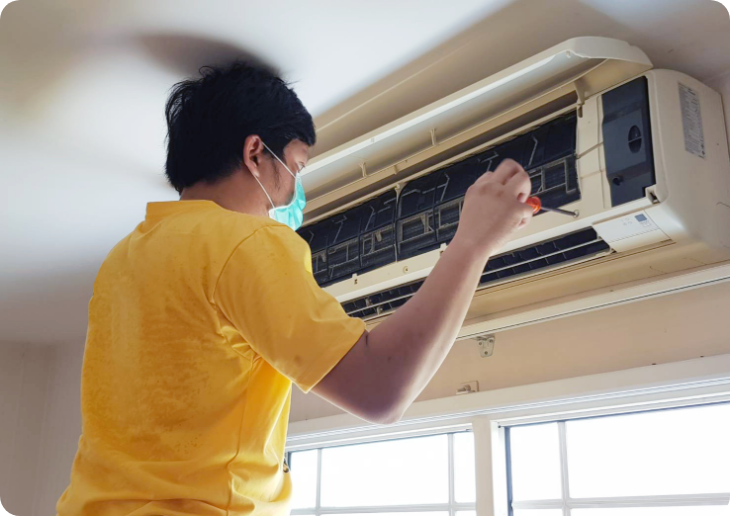Lowering your office cooling costs doesn’t have to be complicated either – there are several simple steps that you can take to reduce your energy bill without sacrificing the climate control in your workplace.
In this article, we’ll show you how easy it can be to keep your office cool while saving money on cooling bills.
The Impact of Office Cooling on the Environment
It cannot be overlooked. Keeping office temperatures at reasonable levels helps conserve energy, reduce air pollution and lower greenhouse gas emissions. It also contributes to a healthier working environment by improving indoor air quality and providing the right temperature for employees to work efficiently.
Unfortunately, most offices are not equipped with eco-friendly systems or they overlook simple strategies that can help reduce energy consumption. As a result, businesses end up wasting resources and contributing to climate change negatively.
To minimize their environmental footprint, companies must prioritize energy efficiency when it comes to cooling their buildings. By taking steps like adjusting thermostats and implementing effective air conditioning systems, businesses can significantly reduce their energy consumption and protect the environment in the process.
Ways to Keep Your Office Cool and Reduce Cooling Costs
Reducing your office cooling costs doesn’t need to be complicated. Here are some simple steps you can take to keep your workplace comfortable while saving money on energy bills:
Maximize Natural Ventilation.
Opening the windows or doors in your office is an easy, effective way of reducing cooling costs while keeping the air fresh and cool. Whenever possible, take advantage of cooler outdoor temperatures during the day before relying on artificial cooling systems.
Implement Shading Strategies.
Keeping direct sunlight from entering your office can help reduce cooling costs by up to 25%. Shading strategies can include using trees, awnings, exterior shades or blinds and curtains for windows.
Adjust Thermostats And Use Ceiling Fans.
Walking into a room that’s too cold won’t save you any money – but setting a thermostat at 78 degrees Fahrenheit (26 Celsius) will help lower energy bills and still provide an acceptable level of comfort for most offices. You can also make sure there are ceiling fans in every workspace to further increase air circulation and keep temperatures lower around seating areas.
Install An Energy Efficient Cooling System.
If you don’t already have one in place, installing an energy-efficient air conditioning unit is the best way to ensure your office stays comfortable while minimizing energy consumption. Look for units with high SEER ratings (Seasonal Energy Efficiency Ratio) that guarantee top-quality performance at the lowest possible energy consumption levels.
Benefits of Keeping Your Office Cool
Aside from reducing cooling costs and mitigating environmental damage, there are other benefits to keeping your office temperature comfortable. Some of the most important ones include:
Improved Productivity.
Research shows that, when kept at the right temperature, employees tend to work more efficiently and productively. Check with your team to get a better understanding of what temperature range is best for them to stay motivated and focused on their tasks.
Healthier Indoor Air Quality.
Allowing fresh air into your workspace helps reduce airborne pollutants and improve indoor air quality. This can help prevent health problems such as allergies and asthma in your employees, making it easier for everyone to stay healthy and productive throughout the day.
Increased Comfort Levels.
Last but not least, having an adequate cooling system in place ensures that everyone in your workplace is comfortable no matter what the temperature is outside – which also has an indirect impact on productivity levels.
Reduced risk of stress and fatigue.
By keeping your office cool, you can help your employees avoid the physical and psychological effects of being too hot and reduce the risk of heat-related illnesses.
Better concentration levels. Maintaining a comfortable temperature in your workspace reduces distractions and helps your staff stay focused on their tasks for longer periods.
Enhanced moods.
0According to studies, cooler temperatures promote well-being and have been linked to improved mood levels among workers. This can lead to better collaboration among colleagues and a more positive atmosphere in the workplace.
Conclusion
Keeping your office cool can have a positive impact on your bottom line. By making the most of natural ventilation, installing an energy efficient cooling system, adjusting thermostats and using shading strategies, you can reduce your cooling costs while providing your employees with a comfortable environment to work in.
Additionally, having temperatures that are at optimum levels helps increase productivity, improves indoor air quality and boosts overall comfort levels.
FAQs
What is the ideal humidity level for an office?
The ideal indoor humidity should be between 30-50% depending on the climate and temperature of the room.
What are some simple ways to cool down my office?
Simple ways to cool down your office can include setting up fans, installing blinds or curtains, using air conditioners and investing in insulation products.
How does keeping an office cool help save energy?
Keeping an office cool helps to minimize energy consumption because it reduces the amount of power needed for air conditioning systems to maintain a comfortable temperature.
Which cooling system is most efficient for offices?
The most efficient cooling system for offices will depend on factors such as size, architecture and budget. Some popular options include evaporative cooling systems, ductless mini-splits and geothermal heating and cooling systems.
Is it better to keep an office warm or cool?
Generally speaking, it is best to keep an office at a comfortable temperature that is neither too warm nor too cold – somewhere between 68-73 degrees Fahrenheit is ideal for most people in terms of both comfort levels and health benefits.
Are air conditioning systems good for the environment?
Yes, air conditioning systems can help to reduce energy consumption and ultimately help protect the environment. Some modern AC units are designed to be more energy-efficient, helping to reduce greenhouse gas emissions and pollution levels.

